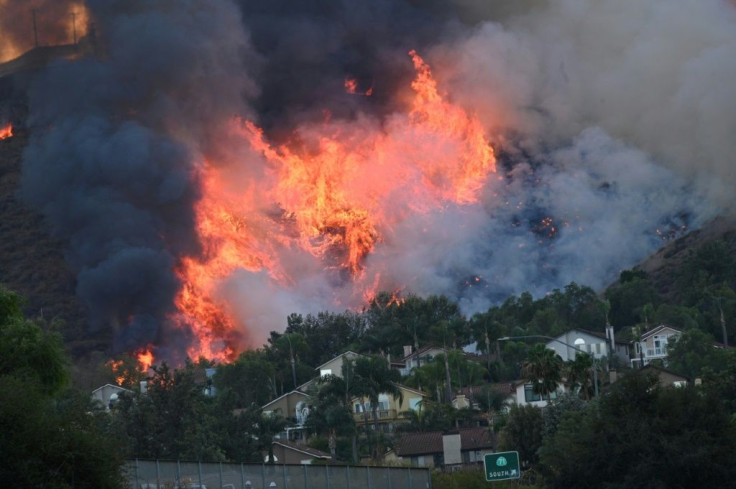Dangerous Heat Forecast In South-West This Week; Temperatures To Soar Past 120F
KEY POINTS
- Wednesday and Thursday expected to be the hottest days
- Los Angeles to see temperatures in the upper 90s F
- Very high heat risk; Heat stroke can lead to death: NWS warning
- The extreme heat in already severe dry conditions feared to spark wild fires
The heatwave sweeping the U.S. South-West is set to intensify this week, with some areas expected to see temperautes higher than 120F, or 49C , and raising the dangers of new fires in a region already facing extremely dry conditions.
On Monday, the National Weather Service issued heat warnings over parts of Southwest Arizona, including Phoenix, saying the "dangerously hot conditions" will extend through Saturday. Utah, Nevada, Southern and Central California, and Arizona are at risk from the heatwave.
“Very high heat risk. Increase in heat related illnesses, including heat cramps, heat exhaustion, and heat stroke. Heat stroke can lead to death," the NWS warned in its advisory.
The hottest days are expected to be Wednesday and Thursday when temperatures will likely exceed 120F in the desert areas and hit 115 in California's valley region. Los Angeles will see temperatures in the upper 90s F (about 37C) Tuesday and Wednesday, which AccuWeather says is more than 25 degrees over the normal high for this time of year.
Death Valley will see some of the highest temperatures ever recorded on Earth next week as an exceptionally intense ridge builds over the Southwest.
— US StormWatch (@US_Stormwatch) June 13, 2021
Currently, @NWSVegas is forecasting the hottest part of the valley to hit 127 F or higher on 4 consecutive days! #CAwx pic.twitter.com/POf9yH0vKl
But residents have more than the health warnings to confront with. “This type of heat is unusual for the month of June,” meteorologist Julie Malingowski of the National Weather Service was quoted by the Guardian, adding that heatwaves historically affected the western states in July and August.
The western states are already grappling with a mega-drought, with a severe lack of rainfall and rising temperatures. A study published last year in the journal Science found the 19-year period from 2000 to 2018 as the driest in southwestern North America since the late 1500s and the second driest since 800 CE. More than a fifth, or 27%, of the West is in "exceptional drought" right now, CBS reported.
What was unusually warm in the 1950s is now normal.
— Ed Hawkins (@ed_hawkins) May 3, 2021
What was extremely warm in the 1950s is now just unusual.
What was impossibly warm in the 1950s is now possible.
From: https://t.co/EJAaXdfc6Q pic.twitter.com/QBqgYq0oYf
The steadily rising heat combined with the severe drought offers the perfect conditions for wildfires to break out again. Last year, wild fires burned 4.2 million acres in California and other Western states.
Fire weather in parts of the West will be more active the next two days. Critically dry and windy conditions are expected in parts of the Great Basin. Elevated fire weather will occur with sundowner winds in southern California. Dry thunderstorms are possible in the Southwest. pic.twitter.com/2yDhsyqaWm
— NWS Storm Prediction Center (@NWSSPC) June 14, 2021
“We are in the middle of a drought and the vegetation is stressed already,” Malingowski said and reiterated that fire spreads easily in hot, dry weather. Temperatures are expected to stay higher than normal through the summer.
The heat may force households to rely heavily on air conditioning and this could stress California’s power grid.
California Independent System Operator, which oversees most of the state's power grid, called on consumers to conserve energy but said it did not anticipate rotating outages. "We are headed into some record-breaking high heat territory, and we may call a Flex Alert if needed," Anne Gonzales, a spokesperson for California Independent System Operator, told Reuters. The alert is a voluntary call for energy conservation.
Last year a heatwave in August led to rotating blackouts that left over 400,000 homes and businesses without power for up to 2-1/2 hours.

© Copyright IBTimes 2024. All rights reserved.





















